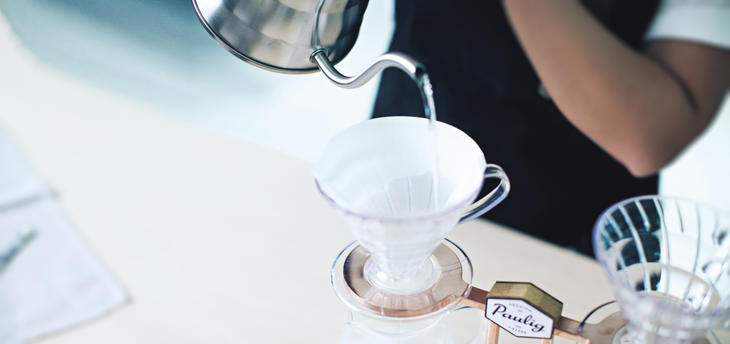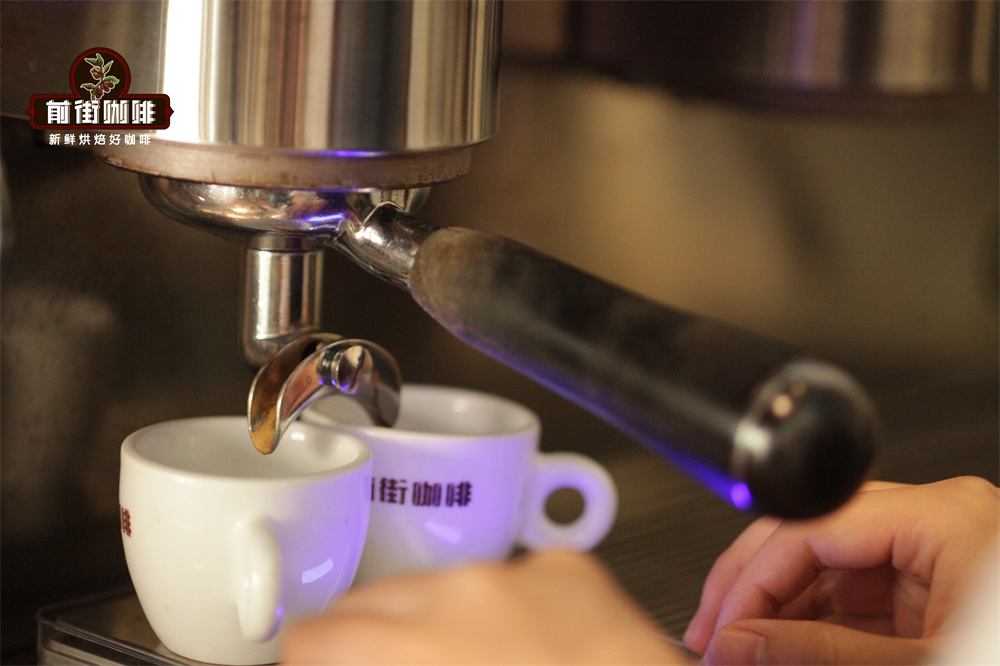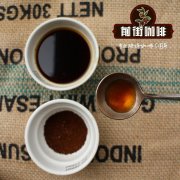Coffee brewing water science-is there really the most suitable water quality for coffee brewing?
Professional coffee knowledge exchange More coffee bean information Please pay attention to coffee workshop (Weixin Official Accounts cafe_style)
The quality of coffee directly affects the taste, aroma, consistency and many other health elements of coffee. The key influencing factor is the mineral composition of the water. Calcium, magnesium, sodium, potassium and other mineral ions in water will affect the extraction ability of coffee in thermodynamics, resulting in changes in coffee flavor.
General coffee chain stores, convenience stores will use RO filter water to brew coffee, because filtered water is easy to obtain, large enough to meet commercial demand, boutique cafes will use higher hardness of water to brew coffee, such as water softener filter water or adjusted hardness of water quality, which is why the high-priced coffee shop hand brewed coffee has a better flavor!

There is no perfect coffee in the world, but there is the most suitable water quality for coffee beans.
How a quenched bean can realize its potential determines your evaluation of it in the soaking time of dozens of seconds, but … Have you ever thought about it? The main ingredient of a cup of coffee is water, and any factor that affects the water quality will also change the flavor and tonality of coffee beans. We may not have thought about the taste of different people, but many studies have confirmed that the effect of water quality on the whole cup of coffee is actually no less than any link. If we pick out the water quality that makes it bloom, isn't that what we crave?
What on earth is in the water for making coffee?
In water quality science, there is no longer only H2O, drinking water is a complex mixture, containing a variety of minerals (sodium, potassium, magnesium, calcium, chlorine). The effect of coffee beans on the flavor of this cup of coffee is more than 80%, but the remaining 20% is the significant effect of water quality on the flavor of coffee, because water carries these phenols, organic acids and other coffee substances. it is not only soluble in water, but also makes it so easy for us to drink, including the chemical and physical changes of water science on coffee. And then affect the aroma, flavor, mellow and other sensory factors.
The water that makes coffee also contains "total dissolved solids" (TDS), that is, tiny minerals and organic matter that pass through the soil, water purification plant or water supply system, and finally remain in the water, affecting the finished product of coffee. However, they affect coffee in different ways and to different degrees, depending on the "PPM" of water and the substances composed. Common substances are magnesium, calcium and bicarbonate, all of which can greatly affect the flavor of coffee.
Calcium: it will put flavor molecules into the coffee, and it will help you make a good cup of coffee. But he also has an interesting relationship with bicarbonate, and if there are too many buffers around them, they will stick together and destroy your machine.
Magnesium: magnesium is a drifter. He won't stay with any substance for a long time, so the machine is safe. But he briefly binds to the flavored compounds in the coffee and pulls them into the cup.
Bicarbonate, buffer: it's definitely the one who controls the pH and molecular protonation of coffee. When he is on your side, it will make your coffee delicious, but if you don't care about him, it will even turn the best extract into dirt.
So, is there the most suitable water for coffee?
Water quality, which is rich in magnesium, calcium and bicarbonate, is hard water, which is usually considered to be bad for coffee, but in fact, it is not necessary to sink all minerals with a single pole. the source and function of the hardness of water should be subdivided: the high hardness from bicarbonate ion is not ideal for coffee flavor extraction and will increase the bitterness of coffee. Water with higher magnesium and calcium content will give coffee a stronger taste and improve the taste, which depends on the balance of calcium and magnesium ions and bicarbonate ions in the water.
The reference standard for coffee brewing water published by the World Fine Coffee Association SCA:
The water used to extract coffee should be clean and odorless, with calcium carbonate between 50 and 175 PPM (water hardness), alkalinity between 40 and 75 PPM, and pH between 6 and 8.
But is it possible for a normal family to meet all the conditions? The quality of tap water varies from region to region and varies from day to day. The quality of bottled water is relatively stable, but the composition of each brand of water is not necessarily the same. Most importantly, there is no particularly perfect proportion of water that can extract a perfectly consistent flavor from all coffee beans. Therefore, it is impossible to find water with perfect ingredients that are always suitable for each coffee flavor extraction.
However, "abnormal" people can still play other ways, such as WBrC champion Matt Perger in 2012 and WBrC champion Miyazhe in 2016, both use a unique water distribution scheme, using mineralized pure water to prepare the most suitable cooking water. Among them, the water distribution plan announced by Matt includes: 1, pure water; 2, sodium bicarbonate NaHCO3;3, magnesium sulfate MgSO4 (the specific content and configuration ratio of course will not be announced, after all, it is a diner).
However, there is no universal coffee brewing water in the world. To get the best water quality for coffee, you have to determine which water quality your beans are suitable for, which requires the patience of a world champion and the professional level of comparison with taste and screening.
How to simply judge whether hard water or soft water is used at home?
As the general water (tap water, basic filtered water, etc.) contains minerals such as calcium, magnesium ions and bicarbonate ions, calcium and magnesium ions can combine with bicarbonate ions to form magnesium bicarbonate and calcium bicarbonate. When water boils, it releases carbon dioxide, magnesium bicarbonate is converted into magnesium hydroxide, calcium bicarbonate is converted into calcium carbonate, both of them are extremely stable and insoluble in water, and the appearance is white sediment. The main components of scale are calcium carbonate, magnesium hydroxide and carbonate, and the thermal conductivity is low. Whenever water containing calcium or magnesium ions is boiled, scale is formed. Therefore, friends who do not have a TDS concentration meter at home can simply judge whether the water is hard or soft by observing the scale of the kettle, and then decide whether it is necessary to take the follow-up measures of filtration and softening. Of course, to be more accurate, a few dozen pieces of water quality detection pen on a treasure, more or less also have some effect, but most of these so-called "TDS water quality detection pens" are calculated by detecting the electrical conductivity of water quality to calculate the content of "minerals and organic matter". According to the different conductivity and proportion of ions in "minerals and organic matter", the measured TDS value will have a deviation (the larger the value, the greater the deviation).
It should be noted that scale is very common, usually at the bottom of the kettle, we will find hard, gray-white or yellow-white similar deposits, that is, scale. It is not harmful to human health, but it has an adverse effect on coffee opportunities. Using water that generally contains minerals, the scale will slowly form in the boiler and the inner wall of the hot water pipe. Over time, it will continue to hoard into a thick layer like a white wall. If there is too much scale inside the coffee machine, it will affect the heating ability (for example, the steam output of the coffee machine becomes smaller and weaker), it will not be able to automatically pump water and milk, and if it is heavy, it will scale up in the water pipe, reducing the cross-sectional area of water flow in the pipe, resulting in a smaller flow of effluent, and in serious cases, it will completely block the pipe and destroy the normal water cycle.
Is there a difference between "water for hand coffee" and "water for espresso"?
Will the water suitable for brewing Italian concentrated coffee be the same as that of hand-brewed coffee? Of course not. In the case of the scale caused by the water used in the coffee machine above, if you do not intend to win the world fame and change to a coffee machine by virtue of an excellent water distribution scheme, of course, we should pay attention to the harm of excessive mineral content and scale accumulation to the life of the coffee machine.
TDS water quality suitable for coffee machines is usually recommended below 50PPM, which is obviously in conflict with SCA's recommendation of 50 to 175 PPM. However, hand-brewed coffee needs to be able to clearly bring out all kinds of flavor and aroma of coffee beans, while Italian concentrate is relatively less demanding, especially latte or cappuccino, because milk can further affect the taste of coffee. The requirements for water quality are not exactly the same, so "hand-brewed coffee water" and "espresso water" are not completely common.
However, each variable in the brewing process is complex and varies from barista to barista. "homemade water" is used to brew coffee just to magnify the detailed differences in coffee. In addition to the water quality, there are more variables that are easier to regulate. There is no need to match different brewing water quality for each different appliance, coffee bean or brewing scheme.
If you like coffee very much, but do not want to rely on "homemade water" to make good coffee, you can compare the ingredients on the mineral water package with the reference standards of the World Fine Coffee Association, brew the same kind of coffee with different brands of water, and then choose the water you like. You can also observe which coffee is suitable for brewing with different brands of water.
In any case, when making coffee, we will consider the origin of the coffee, the processing method, the depth of roasting, and record the grinding thickness and brewing time, so why not pay more attention to the water? Water has a great influence on the flavor of coffee, as long as a little test and comparison, according to the test results can lead to the most diverse and delicate flavor and smell of coffee.
END
Important Notice :
前街咖啡 FrontStreet Coffee has moved to new addredd:
FrontStreet Coffee Address: 315,Donghua East Road,GuangZhou
Tel:020 38364473
- Prev

How to produce espresso oil? How to make Italian concentrated Oil Rich Coffee Bean recommendation
Professional coffee knowledge exchange more coffee bean information please follow the coffee workshop (Wechat official account cafe_style) what makes a cup of espresso? pressure. Inevitably, there is fat, the volume of espresso, the characteristics of the beans themselves, but in the end, pressure. Why is stress so important? How does it affect the quality of espresso? Why nine ba
- Next

Introduction to the characteristics of Arabica coffee beans how much is a cup of Arabica coffee
Professional coffee knowledge exchange more coffee bean information please follow the coffee workshop (Wechat official account cafe_style) Arabica (Arabica) is the variety name of the coffee tree. Many coffee lovers don't know that Arabica coffee is actually a kind of coffee, not a coffee called Arabica.
Related
- Beginners will see the "Coffee pull flower" guide!
- What is the difference between ice blog purified milk and ordinary milk coffee?
- Why is the Philippines the largest producer of crops in Liberia?
- For coffee extraction, should the fine powder be retained?
- How does extracted espresso fill pressed powder? How much strength does it take to press the powder?
- How to make jasmine cold extract coffee? Is the jasmine + latte good?
- Will this little toy really make the coffee taste better? How does Lily Drip affect coffee extraction?
- Will the action of slapping the filter cup also affect coffee extraction?
- What's the difference between powder-to-water ratio and powder-to-liquid ratio?
- What is the Ethiopian local species? What does it have to do with Heirloom native species?

